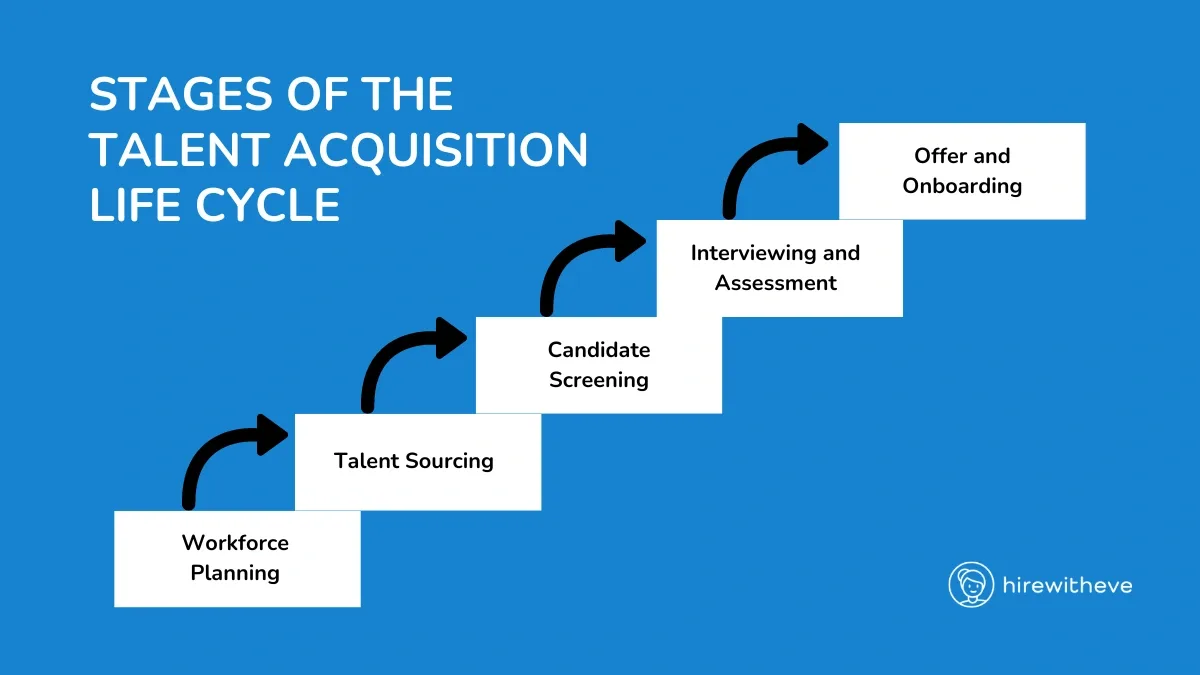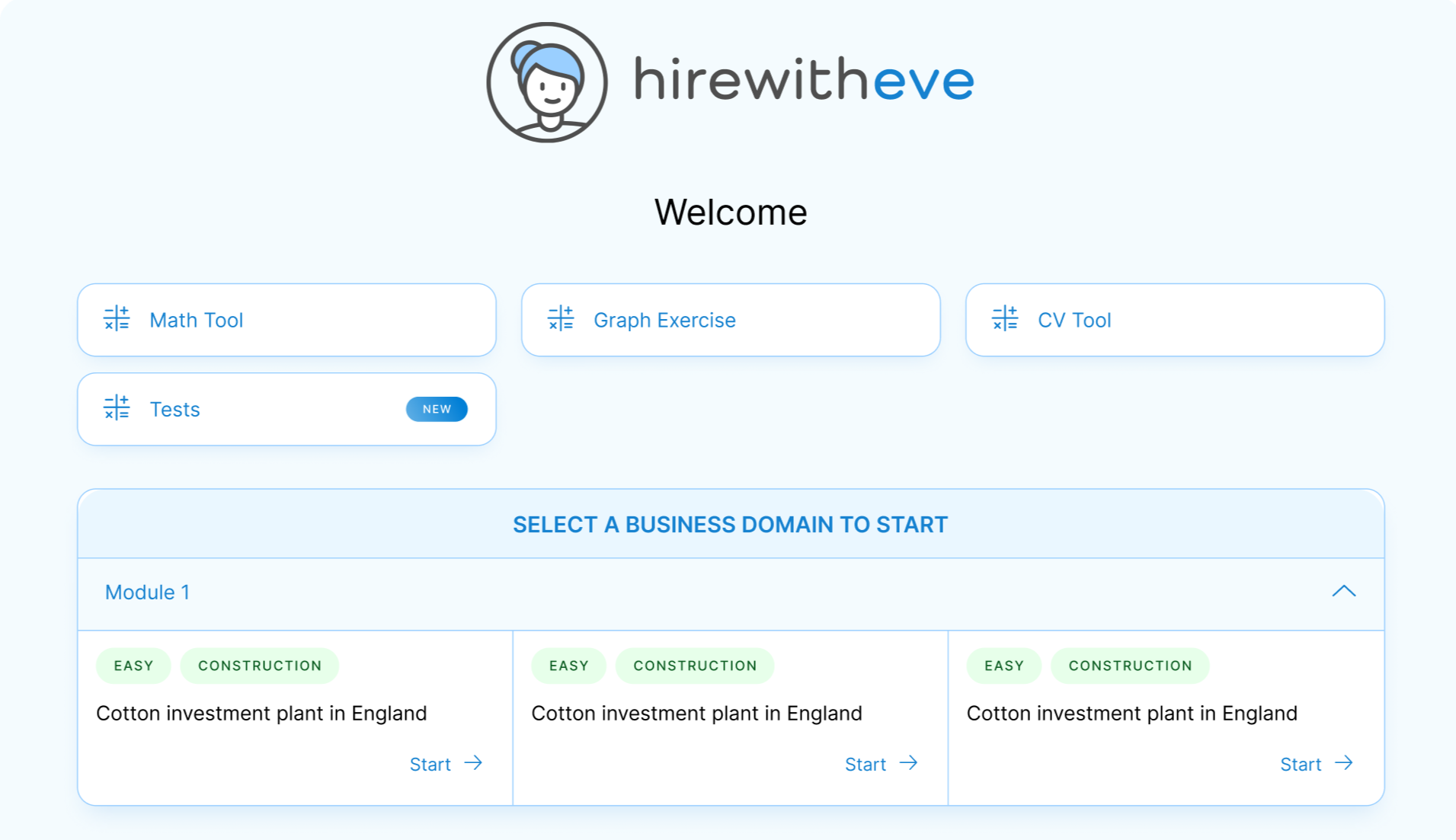Talent Acquisition Life Cycle: Understanding the Key Phases for Effective Hiring

The modern recruitment landscape has evolved, and organizations are now focusing on fine-tuning their talent acquisition life cycle to attract and hire the right talent efficiently. Understanding the key stages in the talent acquisition life cycle is crucial for any organization that seeks to optimize its hiring process.
This blog will delve into the different phases of the talent acquisition life cycle, explaining their importance and how a well-structured process can lead to better hiring outcomes.
As we explore the talent acquisition life cycle, we will cover each stage, offering insights into how HR managers and talent acquisition specialists can navigate this process more effectively. With the keyword talent acquisition life cycle emphasized throughout, this blog will serve as a comprehensive guide to understanding the lifecycle from start to finish.
Table of contents
Overview of the Talent Acquisition Life Cycle
The talent acquisition life cycle is a step-by-step process that organizations follow to identify, attract, assess, and hire talent that aligns with their business goals. It encompasses several stages, each of which plays a critical role in finding and onboarding the right candidates. From workforce planning to the final onboarding process, the talent acquisition life cycle requires strategic planning and a keen understanding of both current and future talent needs.
The efficiency of the talent acquisition life cycle can make or break an organization's ability to stay competitive in its industry. A streamlined approach ensures that the best candidates are not only found but also engaged and hired quickly before they are scooped up by competitors.
The Importance of a Structured Talent Acquisition Life Cycle
A structured talent acquisition life cycle is essential for ensuring consistency and fairness in the hiring process. It also allows HR professionals to measure the effectiveness of their recruitment strategies at each stage. By having a clear talent acquisition framework, organizations can minimize inefficiencies and maximize the potential of every candidate interaction.
Moreover, a well-defined talent acquisition life cycle helps in identifying and resolving bottlenecks in the hiring process. Whether it is a delay in candidate sourcing or miscommunication during onboarding, tracking each stage of the life cycle makes it easier to pinpoint areas for improvement.
Breaking Down Each Stage of the Talent Acquisition Life Cycle

Workforce Planning
Workforce planning is the foundational stage of the talent acquisition life cycle. In this phase, organizations identify their current and future workforce needs based on business goals. Workforce planning involves analyzing skill gaps, forecasting hiring needs, and understanding labor market trends. It sets the tone for the rest of the talent acquisition life cycle by defining what kind of talent the company needs to attract.
Talent Sourcing
Once workforce planning is in place, the next step in the talent acquisition life cycle is talent sourcing. This stage involves using various channels to find potential candidates. Sourcing can include job boards, social media, employee referrals, and professional networks. The quality and diversity of candidates brought into the pipeline during this stage can significantly impact the overall success of the talent acquisition process.
Candidate Screening
Candidate screening is one of the most critical steps in the talent acquisition life cycle. It involves filtering out unsuitable candidates and narrowing down the pool to the best-fit applicants. This phase can include resume screening, phone interviews, or initial assessments. Effective screening ensures that only qualified candidates move forward in the process, reducing the risk of making poor hiring decisions.
Interviewing and Assessment
In the interviewing and assessment phase of the talent acquisition life cycle, recruiters and hiring managers engage with candidates to evaluate their skills, cultural fit, and potential for success within the organization. Structured interviews, technical assessments, and behavioral evaluations are commonly used tools during this stage. A comprehensive assessment at this phase can ensure that the best candidates are identified and selected.
Offer and Onboarding
The final stages of the talent acquisition life cycle are the offer and onboarding process. After selecting the right candidate, an offer is made, and the onboarding process begins. A smooth onboarding process is crucial for ensuring new hires feel welcomed and are quickly integrated into the organization. A strong onboarding experience can increase employee engagement and retention, ultimately contributing to the long-term success of the hire.
Survey Insights on the Talent Acquisition Life Cycle
According to a recent survey by the Talent Board, companies that invest in refining their talent acquisition life cycle report higher levels of candidate satisfaction and better overall hiring outcomes. The survey highlighted that organizations that prioritize workforce planning and talent sourcing as key parts of the talent acquisition life cycle see a 15% improvement in the quality of hires.
Furthermore, research from the Society for Human Resource Management (SHRM) found that structured candidate screening and interviewing processes within the talent acquisition life cycle can reduce the time-to-hire by up to 30%. This efficiency not only saves time and resources but also reduces the risk of losing top talent to competitors during the hiring process.
These insights underscore the importance of investing in each phase of the talent acquisition life cycle. By fine-tuning every stage, from workforce planning to onboarding, organizations can significantly improve their hiring efficiency and ensure a better fit between candidates and roles.
Conclusion
In conclusion, the talent acquisition life cycle is a multi-phase process that requires careful planning and execution. From workforce planning to onboarding, each stage plays a crucial role in determining the success of the hiring process. As talent acquisition specialists and HR managers continue to navigate a rapidly changing job market, optimizing the talent acquisition life cycle is more important than ever.
Platforms like HirewithEve can be an invaluable resource for streamlining the talent acquisition life cycle. With features like skills-based assessments, data-driven insights, and seamless integration with Applicant Tracking Systems (ATS), HirewithEve helps organizations at every stage of the life cycle.
Whether you're focusing on workforce planning or improving your candidate screening process, HirewithEve provides the tools you need to enhance your talent acquisition efforts and hire the right people faster.
Ultimately, by leveraging a platform like HirewithEve in your talent acquisition life cycle, you can ensure that your organization stays competitive and continues to attract top talent in an increasingly complex hiring landscape.
Target Your Talent
Unlock tailored solutions for your recruitment and hiring needs with Eve Platform's extensive case study library.
Subscribe now to enhance your HR expertise and excel in your role.
Free Resources

Transforming Hiring: 7 Key Recruiting Metrics
Enhancing recruitment processes with data-driven insights for better hiring outcomes.

Reducing Hiring Bias with Hirewitheve.
Utilizing Hirewitheve to combat bias and streamline recruitment processes effectively.

Hiring Detail-Oriented Candidates
HirewithEve enhances hiring by accurately assessing candidate's attention to detail-oriented.








